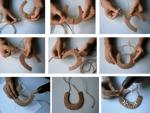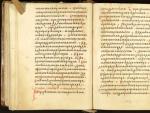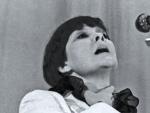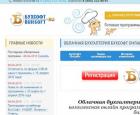Russian stencil letters and numbers. Nickname decorations
Before starting to learn the Russian language, any student must know its basis - the alphabet. You need to learn it in the very first lesson and you need to master this knowledge properly.

Any word in the Russian language consists of sounds, which are the basis of the shell of any word. Each word consists of a different sound design. The combination of letters in a word, as well as the stress, is of great importance.
In any language, including Russian, transcription is used to distinguish letters in words. It is transcription that helps to understand how a word sounds, giving it a generally accepted written form. The transcription will show the softness of the consonants, which syllables are in the word, as well as where the stress is located and which letters fall under it.
The letters of the alphabet can be divided into groups such as vowels and consonants. In addition, vowels can be stressed; this is only six letters. Stressed vowels are those vowels that, when pronouncing a sound, do not encounter any obstacles in the oral cavity. You can put your hand to your throat and feel how the ligaments vibrate. Any vowel can be shouted and sung. It is vowels that are the basis of any word, but stressed syllables sound distinctly, while unstressed syllables sound more colorless.
Consonant sounds usually encounter an obstacle in their path during pronunciation. Usually such sounds are quite difficult to pronounce if they are in a row. The Russian language does not have words that consist only of consonants. Consonants can also be divided into voiced and voiceless, as well as paired and unpaired sounds.
Capital letters

When studying the alphabet, you must also study the writing of letters, as well as punctuation marks. Large capital letters will be very important and needed in all further education of children. To develop handwriting, you will need to show your child different fonts that are used to write one or another capital letter.
For correct design letters while writing, you can make reminders for children. You just need to take sheets of paper that are in A4 format, on which to print suitable and various stencils with capital letters. Use a wide variety of fonts so that children can best remember how to write one or another letter of the Russian language. Such pictures can be colored, you can draw small elements of decoration on them, but in such a way that they do not distract from the information that the stencils contain.
You can use classic comb-over fonts, original writing, floral and festive designs, the main thing is to show your imagination and involve children in creating such an alphabet; they will be interested in decorating and coloring capital letters on paper that is in A4 format.
Lowercase letters
Learning the rules of how to write lowercase letters is just as important as uppercase letters. Therefore, in order to learn the entire alphabet this way, it would also be a good idea to use similar stencils and different fonts that can be printed on paper that is in A4 format.
Then lowercase letters will be learned much easier by children, and if printed pictures are hung up as an example, then children will better remember the Russian alphabet and learn to write different fonts using printed stencils as an example. It is the stencils that will become the basis for children to quickly memorize certain lowercase letters.
Russian alphabet
The letters of the Russian alphabet are divided into vowels and consonants. There are 10 vowel letters, these are A E E I O U Y Y E Y YA. Consonants 21 - B C D D F G H J K L M N P R S T F X C Ch Sh Sh. There are 33 letters in total.
Letters Kommersant And b are neither vowels nor consonants.
Spend time with your child in an interesting and useful way. We wish you success. 



How to play with your child using cards with letters?
Game number 1. Name the letter.
Before you start playing this game, introduce your child to a few letters.
You show your child a card with a letter, and he says which letter is written. For the correct answer, the child receives a chip. At the end of the game there is a prize. Please note that vowels are written in red and consonants in blue.
Tell your child that sounds are vowels and consonants. Vowel sounds are easy to sing, shout, and pronounce. There is nothing in the mouth - neither lips nor tongue. Let the child guess what vowel sound is in the words: poppy, forest, cat, house, etc.
And consonants. When pronouncing them, something constantly gets in the way in the mouth - either the lips or the tongue. Play, let the child name the consonants he hears: day, meadow, juice, poppy, etc.
Use this game to learn all the letters of the alphabet.
Game No. 2. Name words starting with the given letter.
Offer any letter that the baby knows, and take turns saying words starting with that letter. Now let the child choose the letter, come up with words again, and continue in the same way.
Game No. 3. Who says that?
Before starting the game, choose one card with a letter that begins with a consonant sound (for example, m). Next to this letter, place the letter representing the vowel sound (for example, “a”).
At first, you shouldn’t push your child and insist that he read more syllables. Focus your attention on the question: “Who says that?” The child must answer which animal makes such a voice.
For each correct answer, give a chip. Over time, the game can be played in a group of children and a competition can be organized to see who can name the proposed syllables faster and more correctly.
Game number 4. Change the vowel.
In this game, the first letter, the consonant, remains unchanged, but the letters that represent the vowel sound change. For example: ma, mo, mu, mi, me, we, me. Then the first letter can be replaced (the child can choose the letter himself) and continue reading.
Game number 5. Change the consonant.
In this game, the first letter remains unchanged - the vowel, but the letters that represent the consonant sound change. For example: am, an, hell, av, ash, ar, at. Then the first letter can be replaced (the child can choose the letter himself) and continue reading.
Game number 6. Funny letter combinations.
This game is perhaps the most difficult at this stage of learning, since the child needs to read letter combinations that consist only of consonant sounds (fl, zv, kr, sl, st, br, gl, pl, hl, zm, kr, dv, sk, kv). To interest your child, invite him to choose the funniest letter combination from those that he reads.
Game No. 7. Create a syllable.
Using letter cards, invite your child to write the syllable you name. For a correctly completed task, the child receives a chip.
You can organize a competition with prizes in a group of children. The first one to create a syllable will receive a chip. At the end of the game, a winner is selected based on the number of chips received and receives a prize.
Game No. 8. Put the word together.
Using cards with letters, you need to form a word of three, and later of four or five letters, invented by your playing partner. For example, you named the word “garden”, and the child must put it together from letters. Then, on the contrary, the child names a three-letter word, and you add it up. Be sure to ask your child to check if you completed the task correctly. For fun and to check your attentiveness, sometimes make mistakes. Let the child identify them. Each correctly written word is awarded a chip. The one who collects the most chips wins.
Bright, colored cards with letters of the Russian alphabet.

































Many well-known practical teachers, such as Zaitsev, Doman, recommend starting to study letters and the alphabet with your child from 1.5 to 2 years old. To help you, we offer cards prepared by us with large large Russian letters. You can print the Russian alphabet, print it out, cut it out and use it as a tool for learning sounds and syllables.
Currently, there are many methods for teaching a child to read. But without knowing the letters of the alphabet, it is naturally impossible to teach a child to read. Using available material, in the form of cards with letters for children, will come in handy.
How to start learning letters with your child
First, you can print out alphabet cards for children in one copy. This will be enough to learn just the letters.
Children aged 1.5 -2 years should be dealt with exclusively in game form, a few minutes a day. With children aged 3 - 4 years, the lesson time increases to 15 minutes a day.
If you decide to make the letters of the alphabet yourself and teach your child yourself, then do not load your child with letters alone. A child needs variety; you can literally spend a couple of minutes paying attention to the colors and shapes of objects. Then the child will be more interested.
And most importantly, there is no need to grieve if the child does not immediately begin to “declare poetry” to you. Even if over the course of several lessons he seems to you to understand nothing and refuses to tell you letters and numbers, this is not at all true. The child simply remembers everything, analyzes it, time will pass, and you will be simply amazed by his abilities. Your job is to continue learning diligently.
When the child masters the letters, you can print out the Russian alphabet in one more or even in 2 copies. Then you can study syllables with your child and form small words.
Read more on our website in the section education and training .

Cards with letters of the Russian alphabet

Cards with letters of the Russian alphabet

Cards with letters of the Russian alphabet

Cards with letters of the Russian alphabet

Cards with letters of the Russian alphabet

Cards with letters of the Russian alphabet

Cards with letters of the Russian alphabet

Cards with letters of the Russian alphabet


Cards with letters of the Russian alphabet, printable Russian alphabet

Letter stencils – useful material for creating a variety of crafts. We have selected several convenient templates for you, with the help of which you can do a lot of interesting things with your own hands. Some of them can also be used for children's creativity, as they look very funny. Others are more strict and classic. There are also many original stencils in the selection.
All letter templates are suitable for cutting out - just print them on paper. If you don’t have this opportunity, try to draw them yourself. Some stencils can simply be used as interesting idea. Most of the letters are collected in the alphabet (Russian or English) - you can select from the collection and print only those that you need.
All images are clickable and available in good quality. In addition, they can be opened in a graphic editor to combine them with something. So, for example, if you need letters to cut out the Russian and English alphabets at the same time, you can easily collect them on one sheet and print them together. Templates can also be enlarged or stretched to achieve the right size blanks
In the selection you will find Russian letters that are perfect for cutting out to decorate children's blocks or home alphabet. Some of them are accompanied by silhouettes of animals, others by funny faces. The same can be done with letter stencils English alphabet.
All the templates presented are suitable for designing postcards or album covers, voluminous crafts (like soap or candles), creating patches on clothes, etc. Many of them would be wise to print on paper and use for scrapbooking. If you want to spray or write with paints, print the entire stencil and cut out the letters themselves with a stationery knife (you won't need them), without touching the paper.








The Russian language is one of the most vibrant, interesting and rich languages in the world. Millions written on it best works- stories, fairy tales, poems. The language is rich and will not be repeated. Like everything fundamental, the Russian language has its own basis - the alphabet.
The birth of the Russian alphabet
Work on the creation of the alphabet began in 860 by order of the ruler of Byzantium, Michael III. He instructed two brothers from the Greek city of Thessaloniki: Cyril and Methodius, to form a written Slavic language. Later, the Cyrillic alphabet was formed from the Greek version of the alphabet by Bulgarian monks.
The formation of the Russian alphabet is directly related to the adoption of Christianity in Europe. Slavic writing began to spread from Bulgaria after Tsar Boris adopted Christianity in 860. It was in Bulgaria that the first written Slavic school was founded. In it, ancient writings - chronicles - were translated into Slavic. Next Old Church Slavonic language appeared in Serbia and Kievan Rus. It was the fact that Old Church Slavonic became the recognized language of the official Russian Church that influenced the fact that over time it replaced Old Russian. At the same time, it remained set expressions and the folk tone of the speech of the Slavs.
Transformations of the Old Church Slavonic alphabet
Since the Russian alphabet was based on the Bulgarian Cyrillic alphabet, which spread after the Christianization of Rus', it initially had 43 letters.
Over time, 14 letters were deleted and 4 letters were added. This is due to the transformation of speech - sounds indicating unused letters have disappeared from it. First of all, the following were missing: iotized usas, large usas.
Under Patriarch His Holiness Nikon in the second half of the seventeenth century, a widespread census of books took place. This period is considered the time of reforms of Russian spelling. Were recorded serial numbers letters But even at that time the alphabet was different from the modern one. Later, already under the reign of Peter I, superscript characters and some duplicate letters denoting numbers were excluded. At that time they had already introduced Arabic numerals and the extra signs became irrelevant.
Back in 1917, the Russian alphabet had 35 letters. But as a result of the writing reform carried out in 1918, 33 letters remained in the Russian alphabet.
Structure of the Russian alphabet
Each word consists of minimal parts - sounds. They, like atoms in molecules, form the shell of the word. Each word and its form has a different sound design. What matters is the combination of letters in a word and the placement of stress.
In order to correctly distinguish the sound of a letter in a particular word, transcription is used. Transcription is a generally accepted graphical form that displays the sound of a word. Transcription shows:
- Syllables in a word.
- Which syllable is stressed in the word? Stress is indicated when a word consists of two or more syllables.
- Softness of consonants.
The letters of the alphabet are divided into several groups. The largest division of sounds is into vowels and consonants.
There are only six letters that are stressed vowels. When pronounced, the sound does not encounter any obstacles when passing through the oral cavity. When playing sounds, the ligaments of the larynx work - if you put your hand to your throat, you can feel the movement of the ligaments. If a person can freely shout or sing a letter, most likely it is a vowel sound. It is vowels that are the basis of syllables. Stressed syllable sounds most clearly in the word. Unstressed syllables may be pronounced differently. That is why when writing words it is necessary to select test words.
When pronouncing consonants, sounds encounter an obstacle in their path. It is the presence of noise that distinguishes consonants and vowels. It is difficult to pronounce words with many consonants. That is why there are no words consisting only of consonants.
Consonants are divided into voiced and voiceless. There are unpaired and paired sounds.
Learning the Russian language begins with the alphabet. Understanding basic phonetics and grammar - key stage teaching children. By instilling in his child a love for his native language from infancy, a person pays tribute to history and traditions. Russian language is the richest language in the world. It is very important not to lose this wealth! Letters of the English alphabet can be downloaded.
Download beautiful letters Russian alphabet for printing in A4 format
 |
|
 |
|
 |
|








 About the company Foreign language courses at Moscow State University
About the company Foreign language courses at Moscow State University Which city and why became the main one in Ancient Mesopotamia?
Which city and why became the main one in Ancient Mesopotamia? Why Bukhsoft Online is better than a regular accounting program!
Why Bukhsoft Online is better than a regular accounting program! Which year is a leap year and how to calculate it
Which year is a leap year and how to calculate it